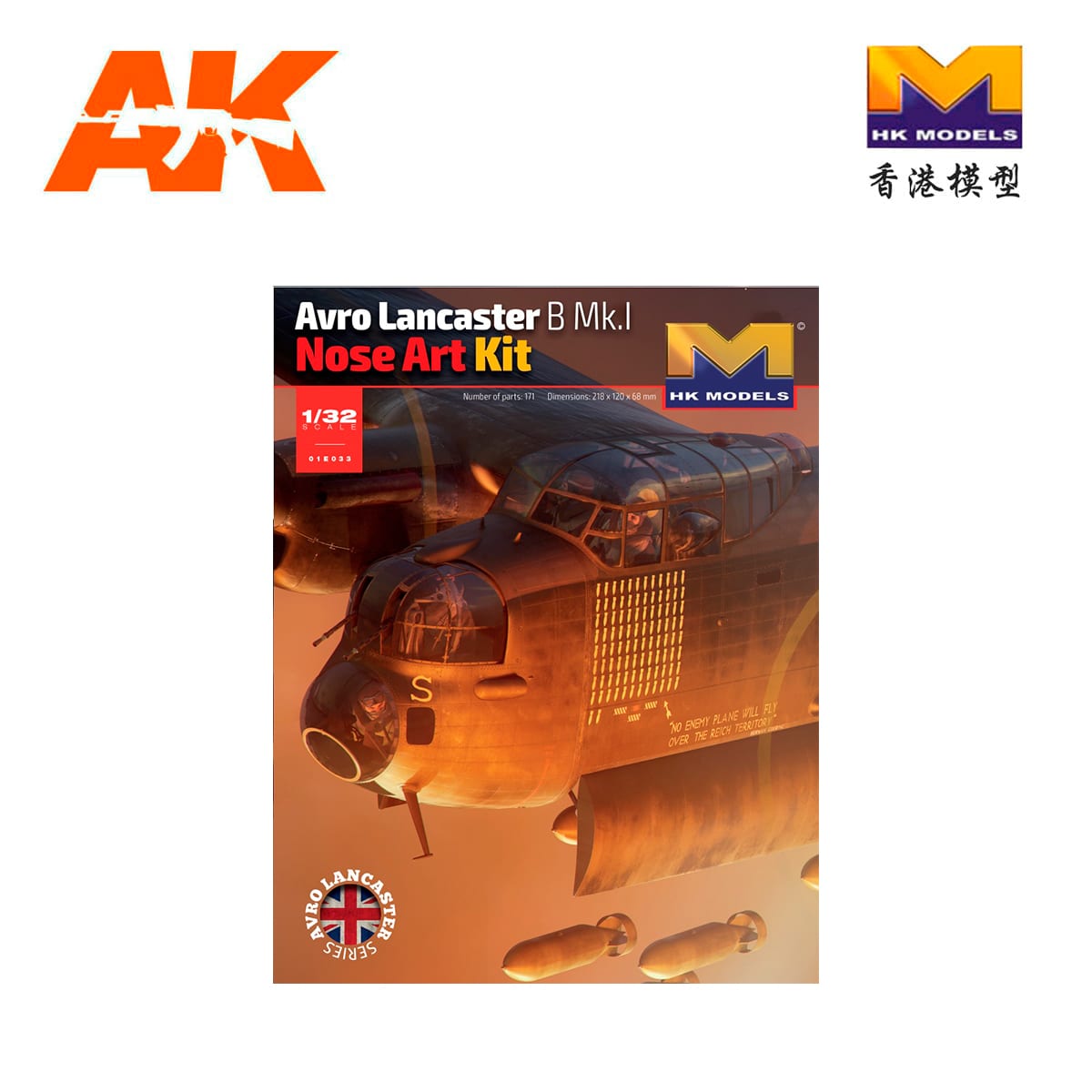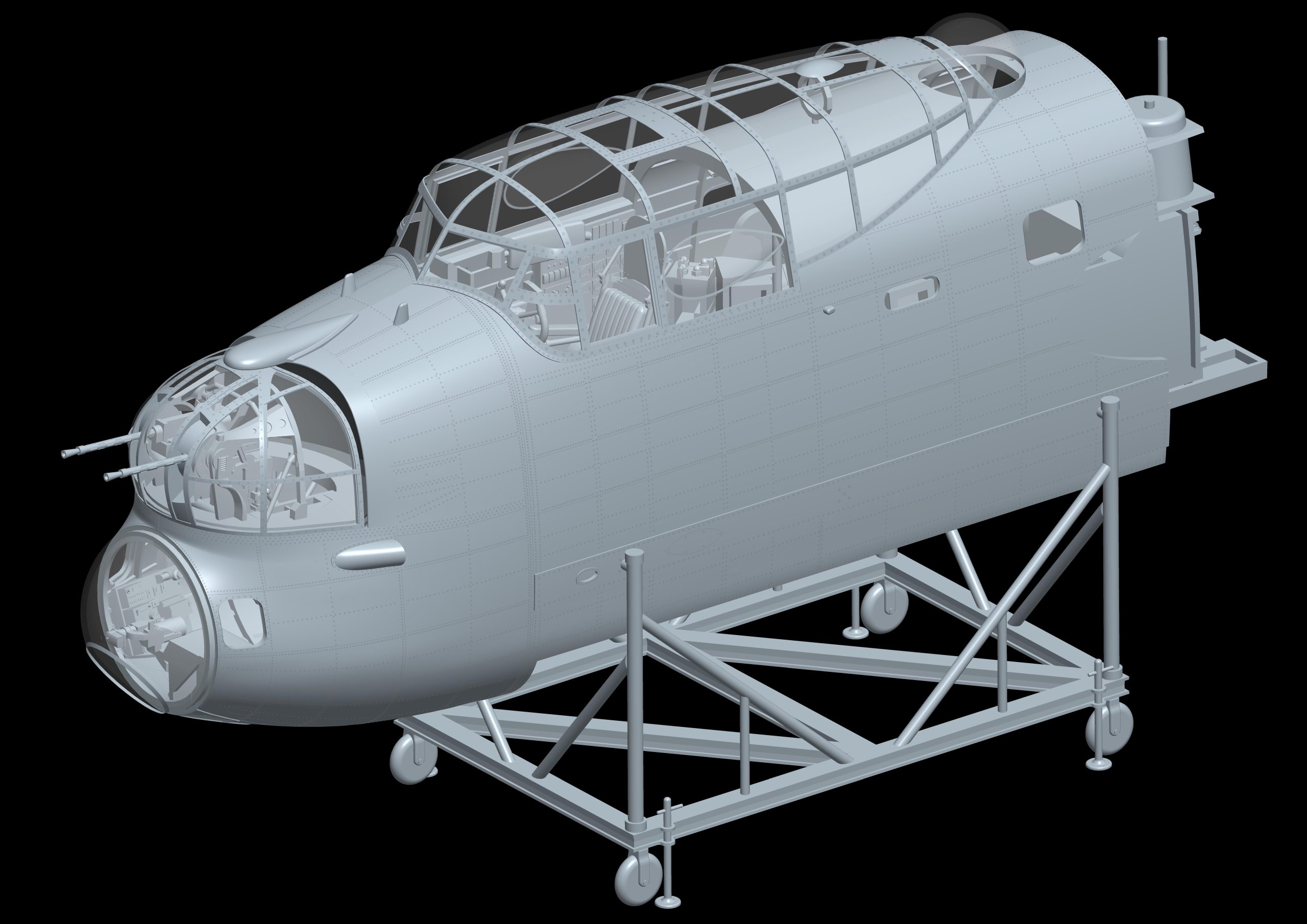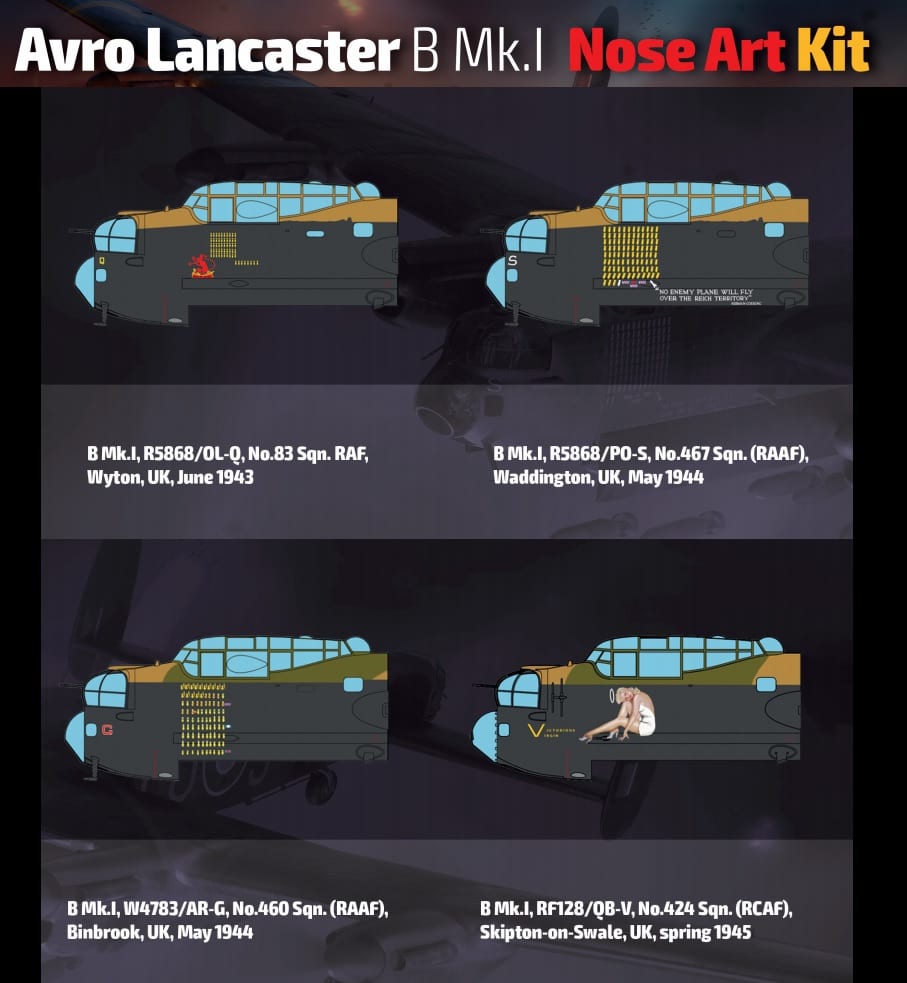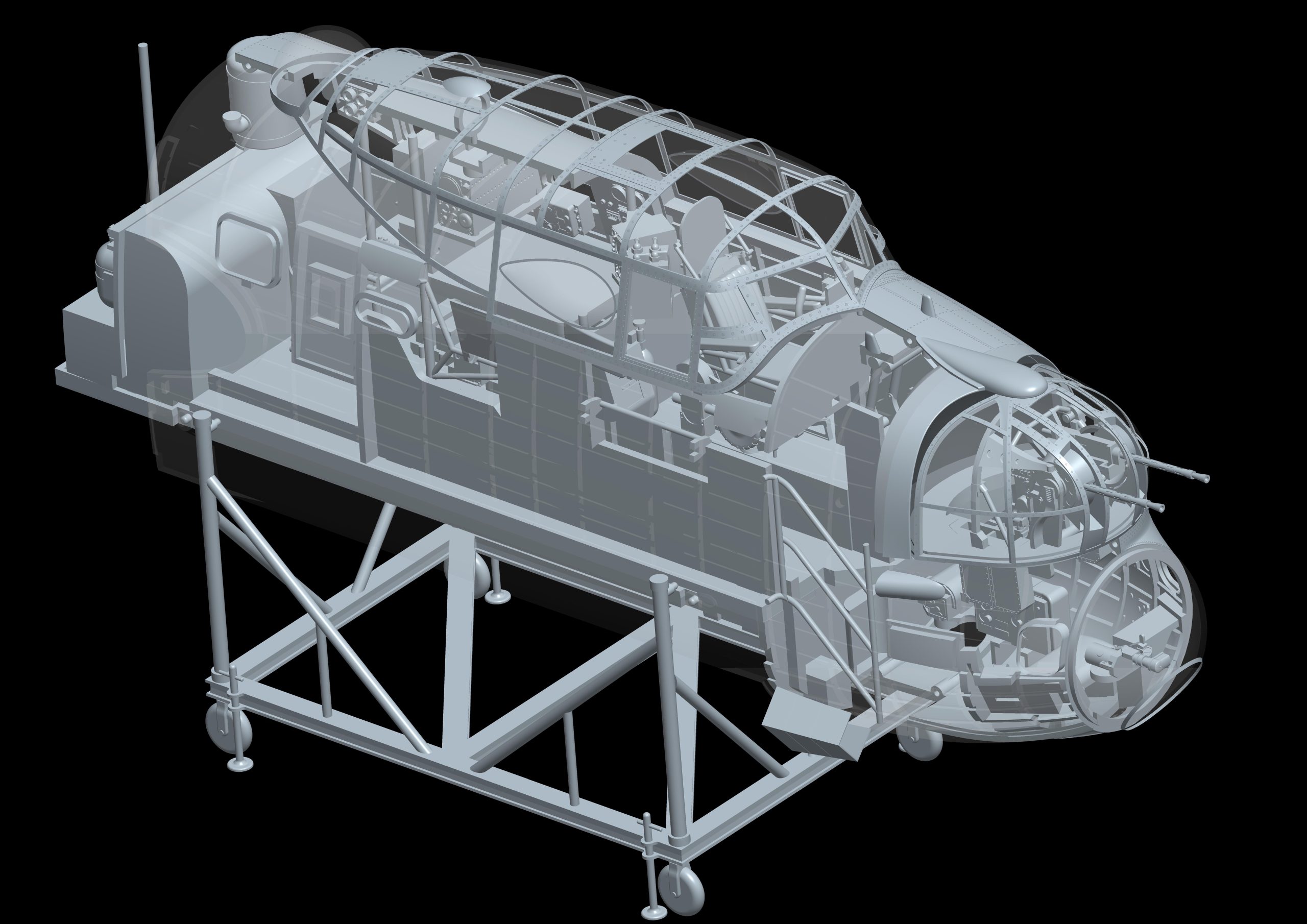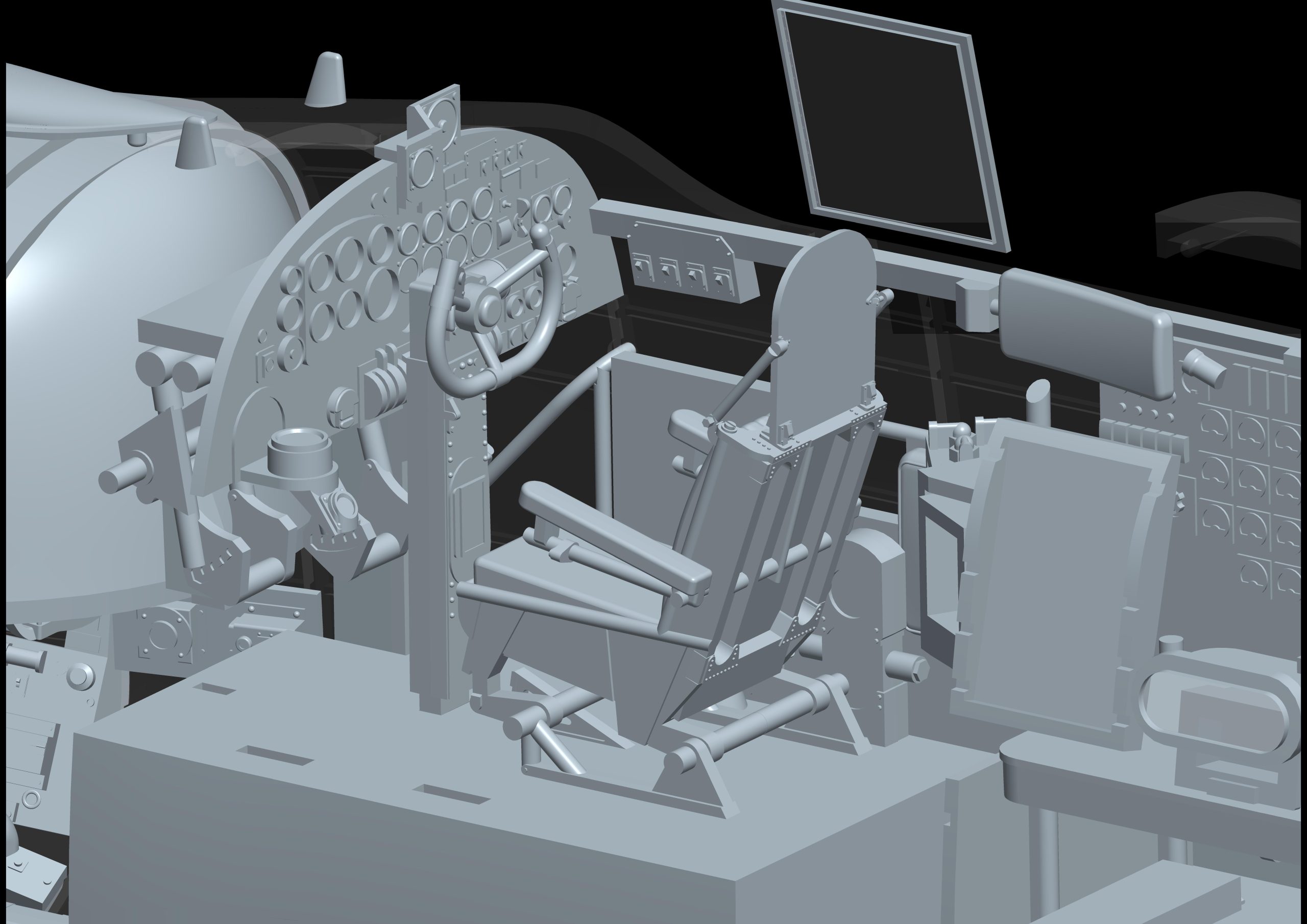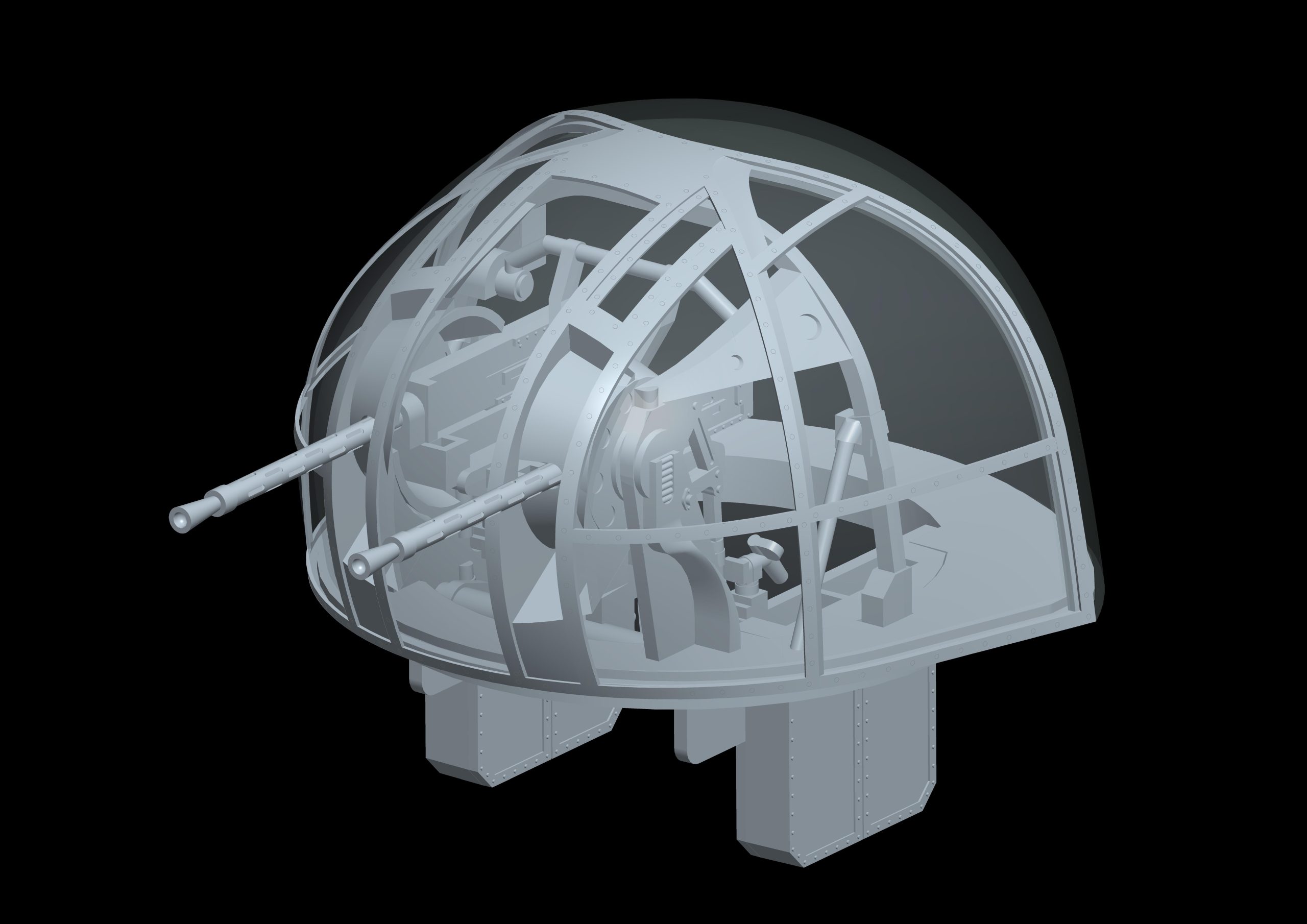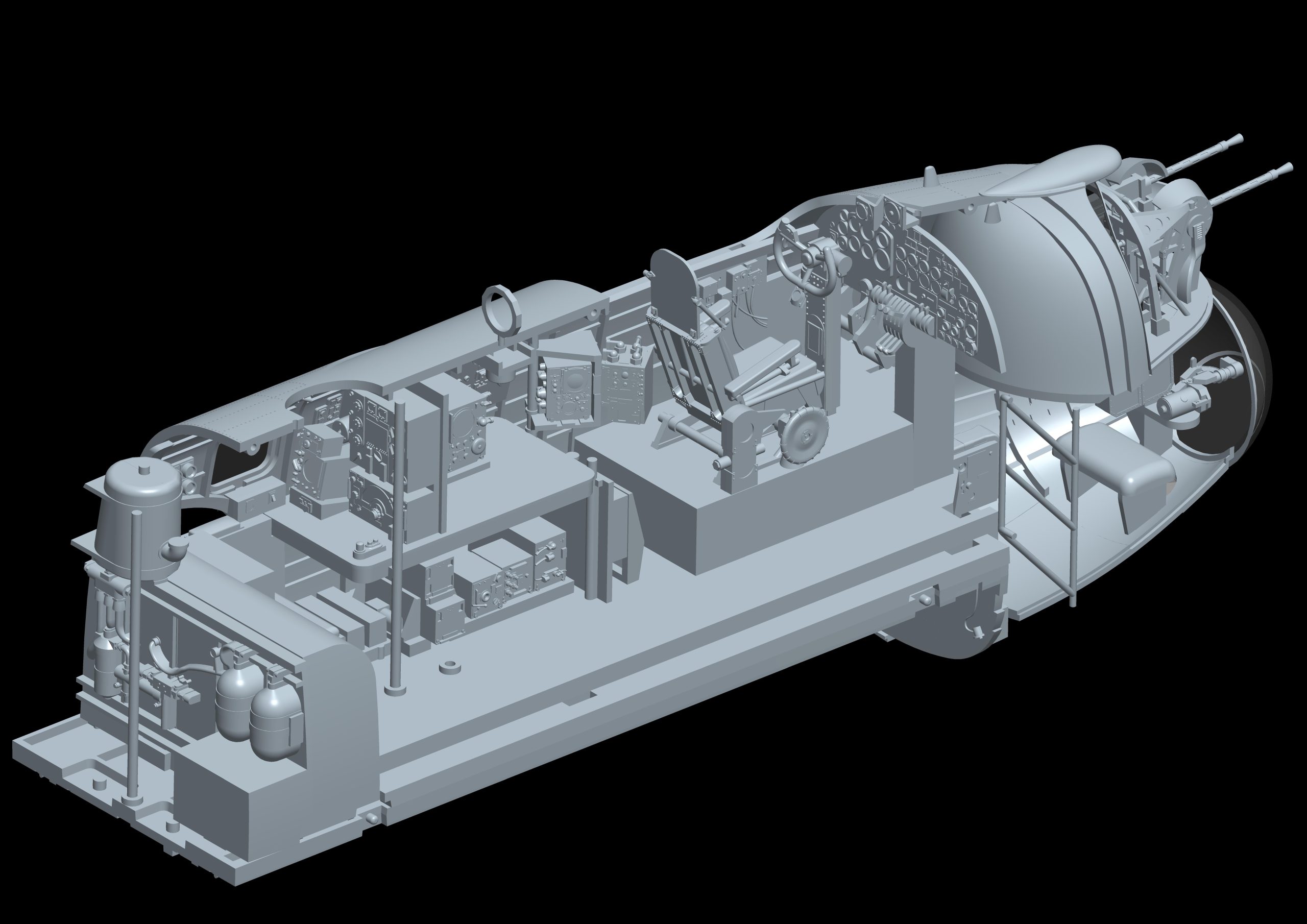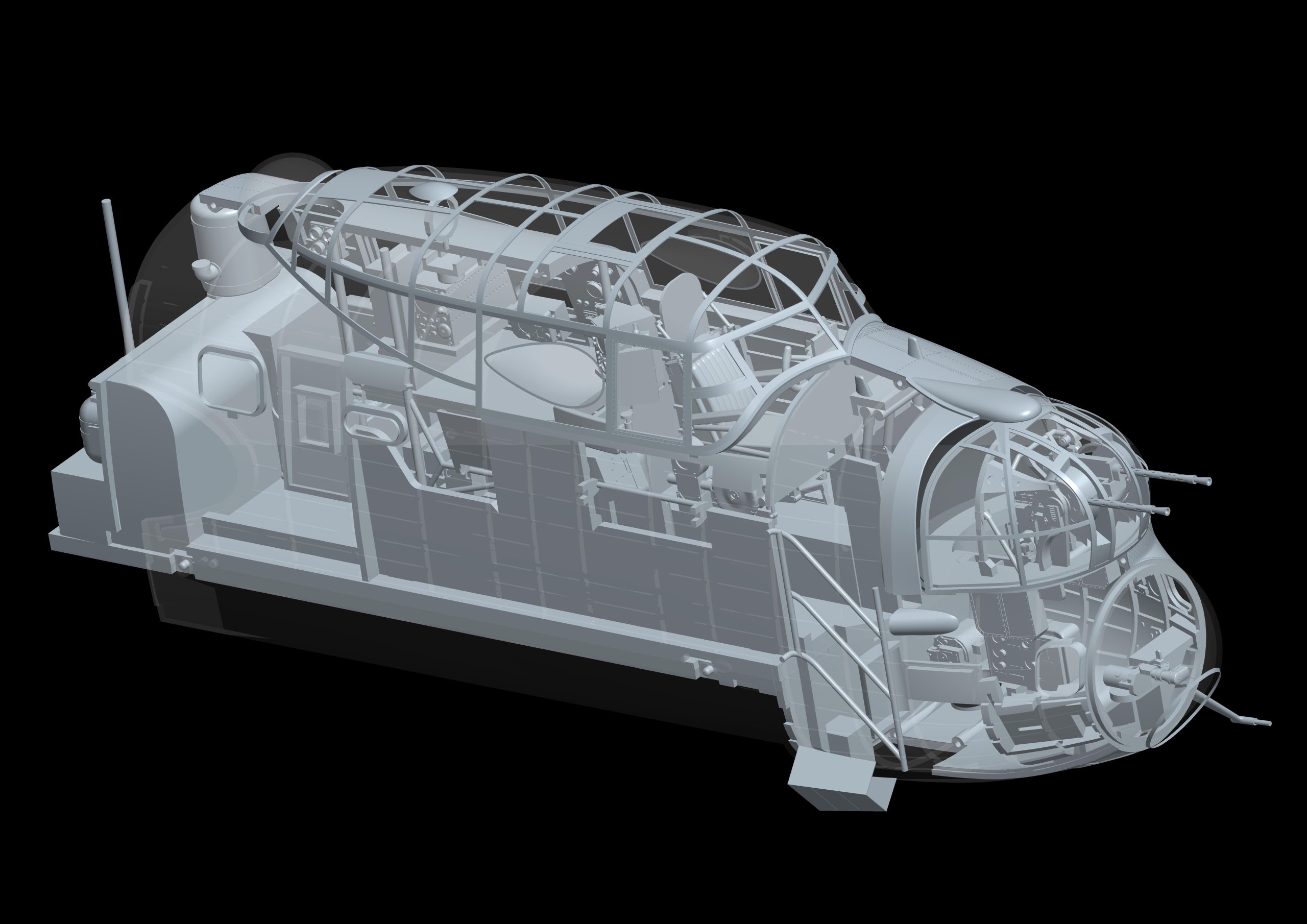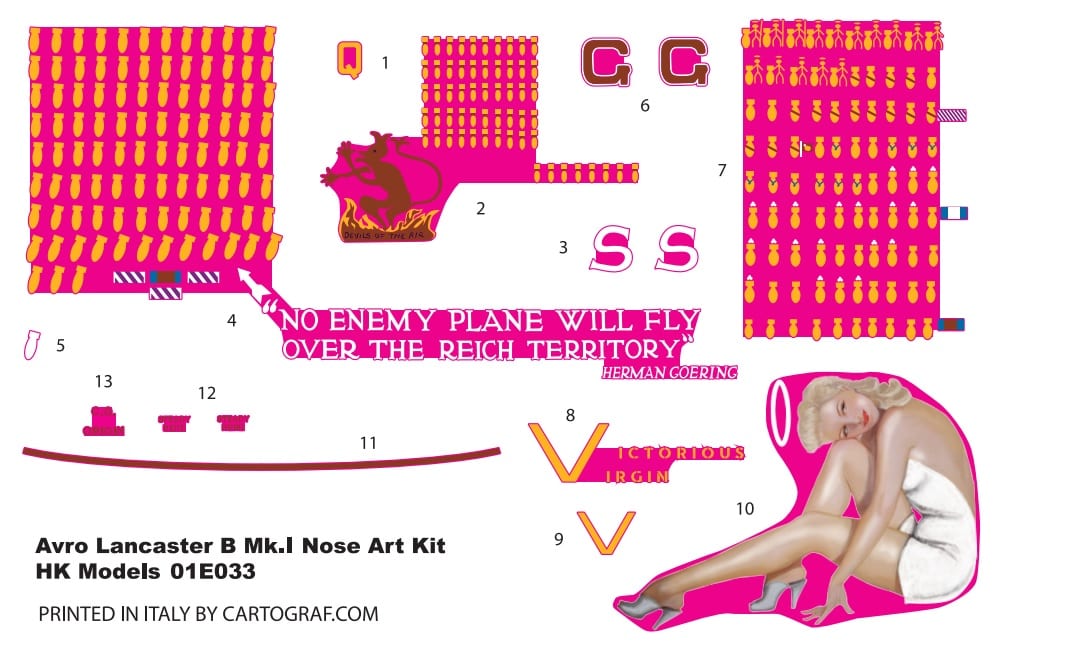Avro Lancaster B Mk.I Nose Art Kit (01E033) 1/32
79,95€
In stock

*Please check our Privacy Policies to see how to we use your personal data.
*Por favor revisa nuestra Política de Privacidad para ver como tratamos tus datos personales
History of the Avro Lancaster
From failure to success. The four-engine Avro type 683 Lancaster was developed
From the disappointing twin-engine Manchester, which suffered from engine fires caused by its unreliable Rolls Royce Vulture engine-installation.
However, the basic Manchester airframe was of sound design. A logical solution was to increase the wingspan and replace the two Vultures with four Merlin engines. The engine-installation originally developed by Rolls-Royce for the Beaufighter II, was quickly adapted and fitted in graceful underslung nacelles. The prototype BT308 made its first flight on January 9th, 1941 and it soon proved to be an excellent aircraft with good handling and high load capability. Initially designated Manchester III, it was soon renamed Lancaster. The general outline of the Lancaster remained the same throughout production, apart from the MK II which used Bristol Hercules radial engines, in case a shortage of the Merlin should arise. The Mk I and III were similar, differing only in the type of Merlin engine fitted. In the case of the Mk III, the Packard built Merlin 28 was utilised. The Lancaster began to equip bomber squadrons in early 1942, where it quickly became the backbone of RAF Bomber Command.
The type was used in many famous raids, such as on the M.A.N. factory in Augsburg, the spectacular Dambusters Raid on the Ruhr Valley dams, and sinking the “Tirpitz” to name but a few. It became famous for its use in high accuracy bombing operations by 617 squadron. Its 33-foot-long bomb bay enabled it to carry high loads as well as the spinning “Upkeep” mine used to break the Ruhr dams. Specially adapted aircraft could carry the massive 12.000 lb “Tallboy” and 22.000 lb “Grand Slam” earthquake bombs. At the end of the war it was also used for food dropping sorties for the starving Dutch population and transporting the many prisoners of war back home from Germany. Postwar Lancasters were used for testing jet engines and in-flight refueling system. As a bomber it was gradually replaced, but it found a useful role in Coastal Command until the last one was withdrawn in October 1956. The RCAF and French l’Aéronavale, however, continued to use the Lancaster until the mid-sixties. A total of 7,377 Lancasters were built in the UK and Canada.
Historia del Avro Lancaster
Del fracaso al éxito. Se desarrolló el Avro tipo 683 Lancaster de cuatro motores.
Del decepcionante Manchester bimotor, que sufrió incendios de motor causados por la instalación poco confiable del motor Rolls Royce Vulture.
Sin embargo, el fuselaje básico de Manchester tenía un diseño sólido. Una solución lógica fue aumentar la envergadura y reemplazar los dos Buitres con cuatro motores Merlin. La instalación del motor desarrollada originalmente por Rolls-Royce para el Beaufighter II, se adaptó rápidamente y se instaló en elegantes góndolas suspendidas. El prototipo BT308 realizó su primer vuelo el 9 de enero de 1941 y pronto demostró ser un excelente avión con buen manejo y alta capacidad de carga. Inicialmente designado Manchester III, pronto fue rebautizado como Lancaster. El esquema general del Lancaster se mantuvo igual durante toda la producción, aparte del MK II que usaba motores radiales Bristol Hércules, en caso de que surgiera una escasez del Merlin. El Mk I y III eran similares, diferenciándose solo en el tipo de motor Merlin instalado. En el caso del Mk III, se utilizó el Merlin 28 construido por Packard. El Lancaster comenzó a equipar escuadrones de bombarderos a principios de 1942, donde rápidamente se convirtió en la columna vertebral del Comando de Bombarderos de la RAF.
El tipo se utilizó en muchas incursiones famosas, como en el M.A.N. fábrica en Augsburgo, el espectacular Raid Dambusters en las presas del valle del Ruhr y el hundimiento del “Tirpitz”, por nombrar solo algunos. Se hizo famoso por su uso en operaciones de bombardeo de alta precisión por parte del escuadrón 617. Su bahía de bombas de 33 pies de largo le permitió transportar grandes cargas, así como la mina giratoria “Mantenimiento” utilizada para romper las presas del Ruhr. Los aviones especialmente adaptados podrían transportar las enormes bombas sísmicas “Tallboy” de 12.000 libras y “Grand Slam” de 22.000 libras. Al final de la guerra, también se utilizó para salidas de comida para la población holandesa hambrienta y para transportar a los muchos prisioneros de guerra de regreso a casa desde Alemania. Los Lancaster de la posguerra se utilizaron para probar motores a reacción y sistemas de reabastecimiento de combustible en vuelo. Como bombardero fue reemplazado gradualmente, pero encontró un papel útil en el Comando Costero hasta que el último fue retirado en octubre de 1956. Sin embargo, la RCAF y l’Aéronavale francesa continuaron usando el Lancaster hasta mediados de los años sesenta. Se construyeron un total de 7.377 Lancaster en el Reino Unido y Canadá.
"Exclusive Product Walk Around"
Additional information
| Weight | 1,5 kg |
|---|---|
| Dimensions | 30 × 25 × 10 cm |
| 3x2xmas |

